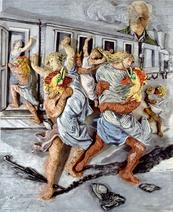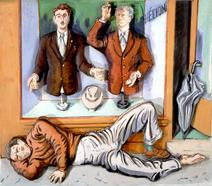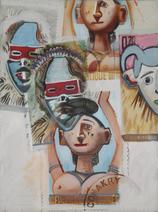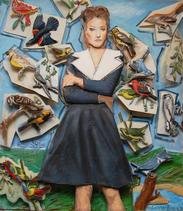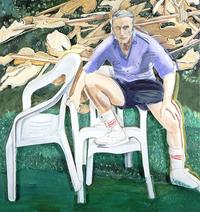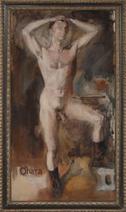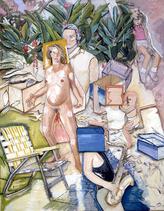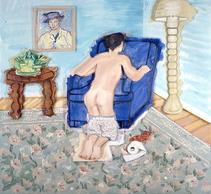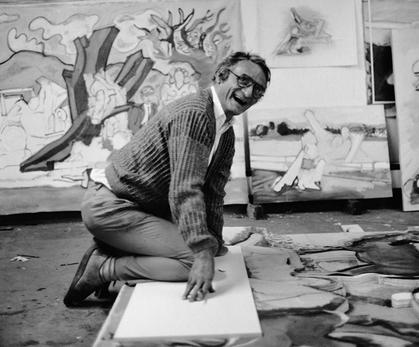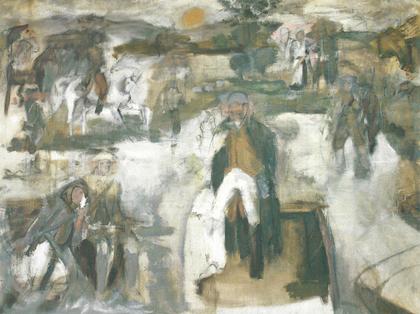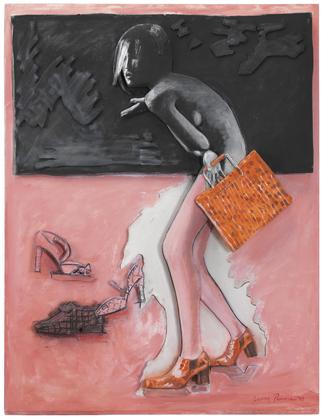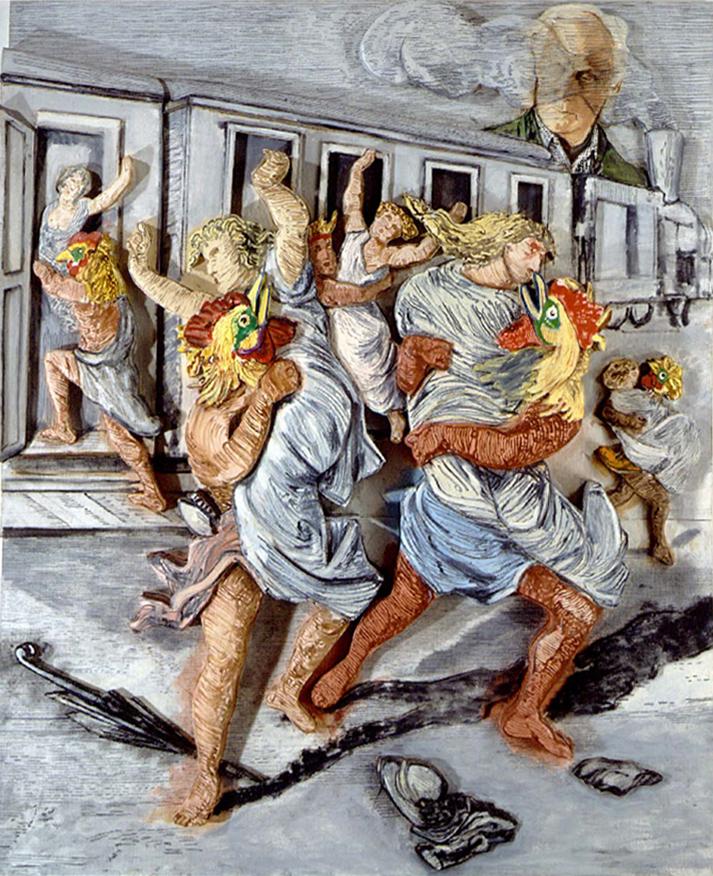
Art and the Artist: Ernst and the Rape of the Sabine Women, 1992. Oil on canvas mounted on sculpted foamboard (Construct), 64.25 x 54 x 4.5 in.
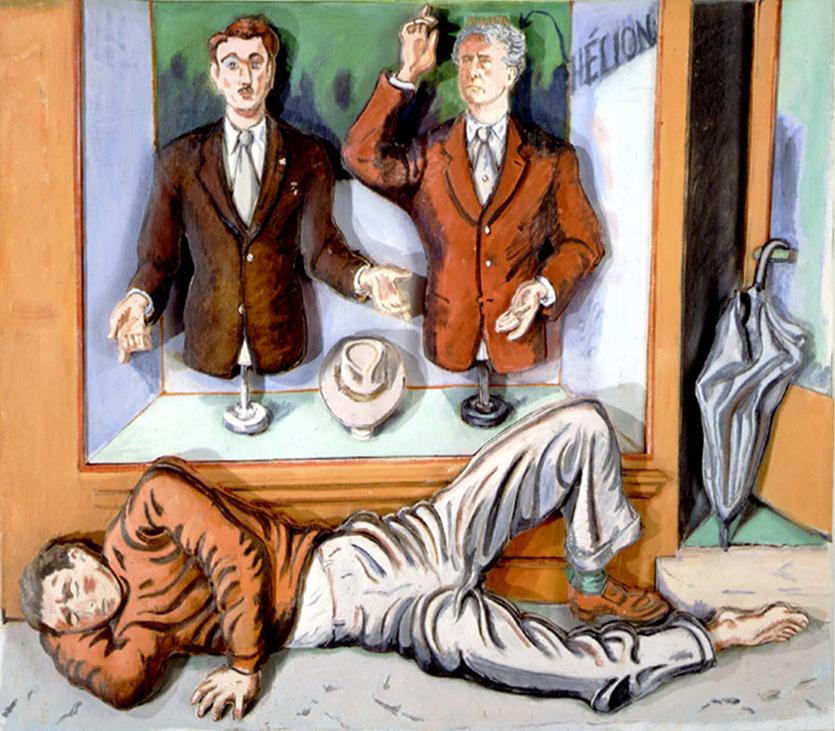
Art and the Artist: Jean Helion and the Dummies, 1992. Oil on canvas mounted on sculpted foamboard (Construct), 46 x 54 x 4.5 in.
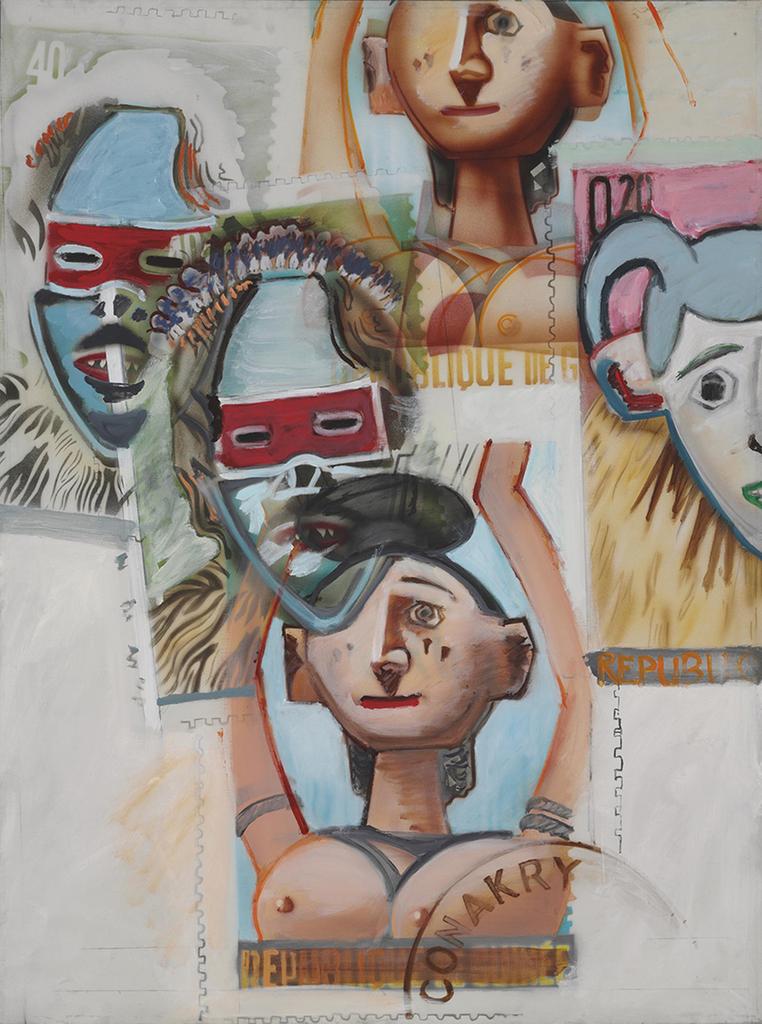
Mixed Patriotic Stamps, 1976. Oil on canvas, 48 x 46 in.
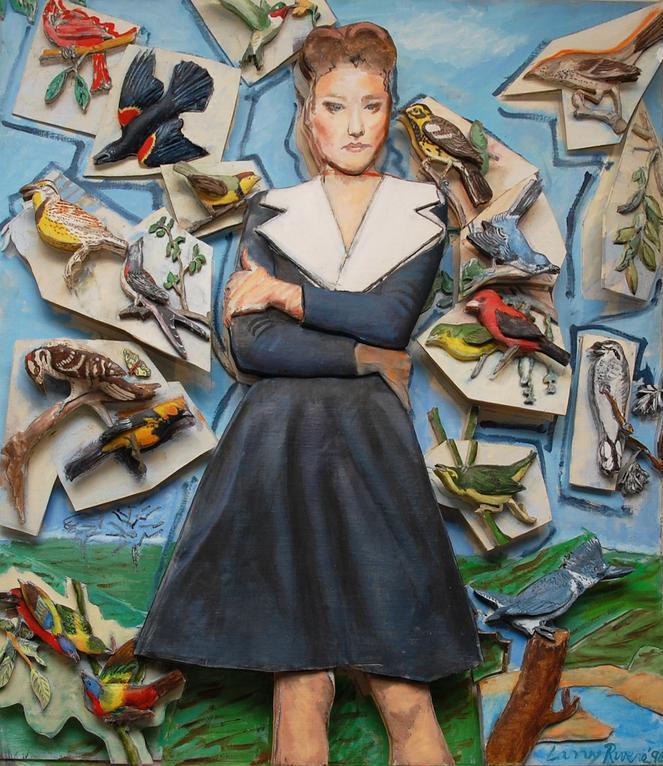
Fashion and the Birds, 1996. Oil on canvas mounted on sculpted foamboard (Construct), 50 x 47 x 5 in.
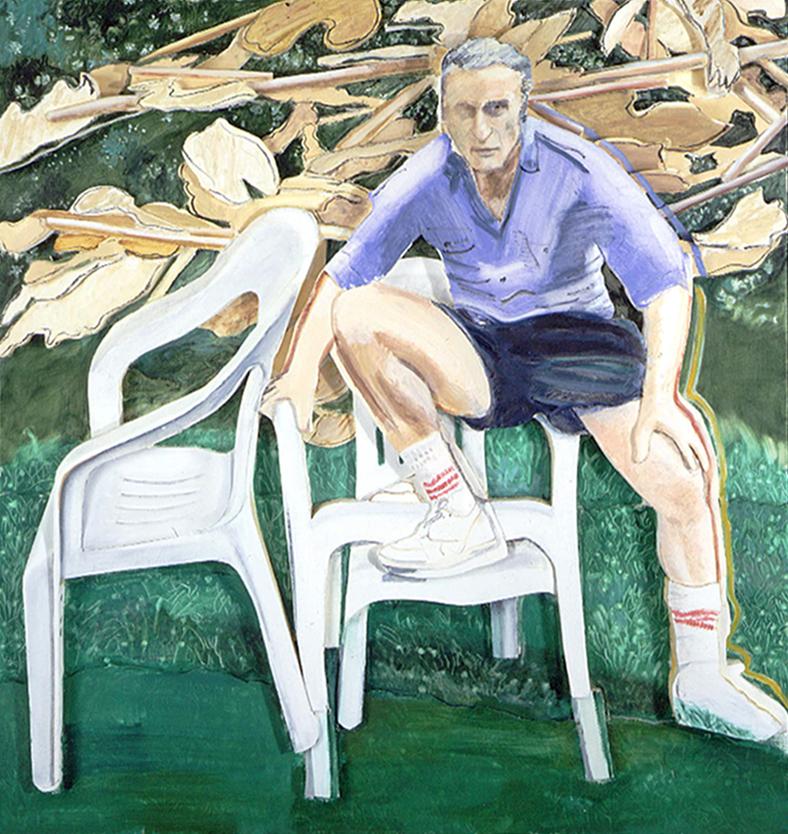
Art and the Artist: Larry Rivers, 1989. Oil on canvas mounted on sculpted foamboard (Construct), 68.5 x 63.25 x 4.5 in.
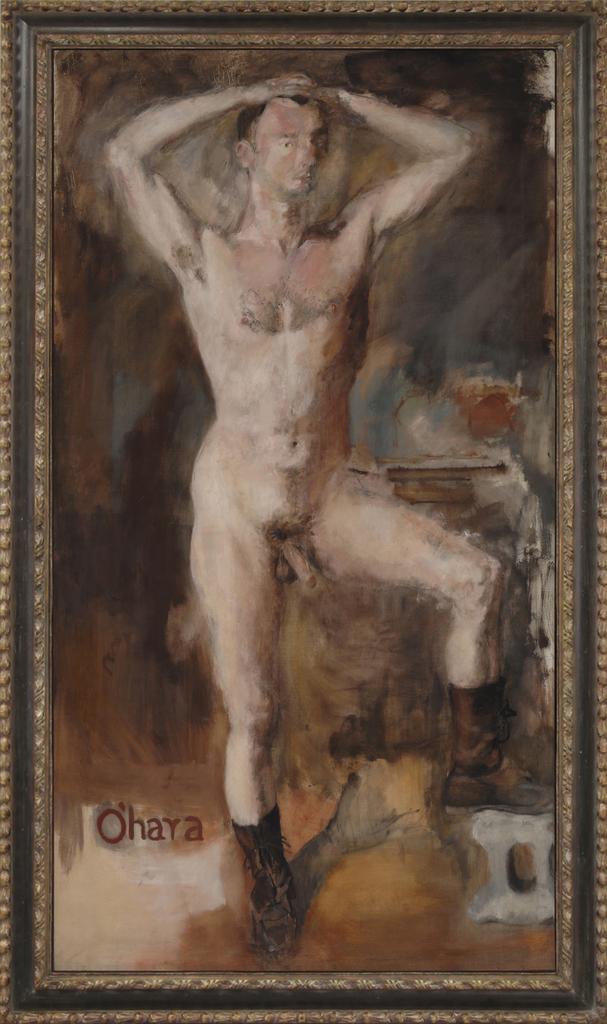
O'Hara Nude with Boots, 1954. Oil on canvas, 97 x 53 in.
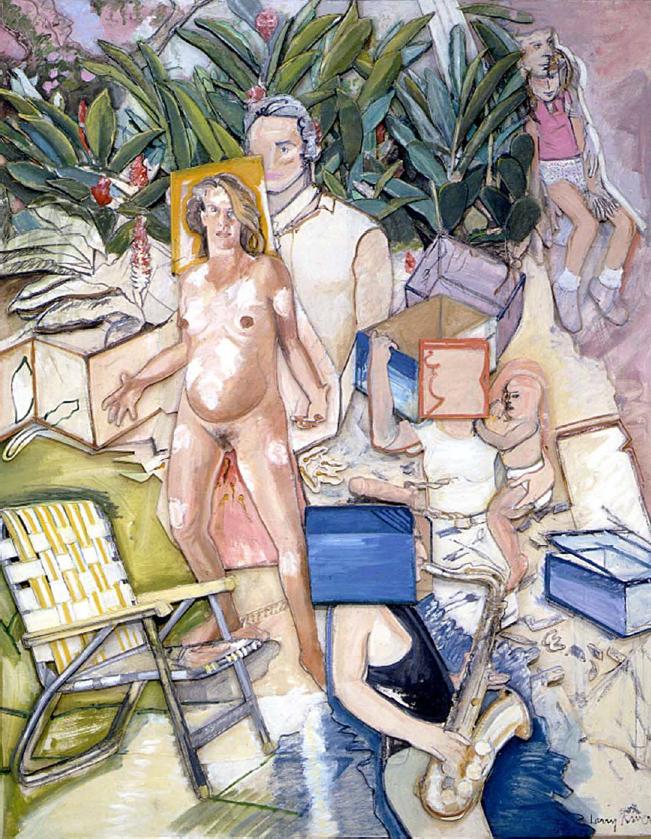
Fassbinder's Planned Parenthood, 1986. Oil on canvas mounted on sculpted foamboard (Construct), 100 x 80 x 5 in.
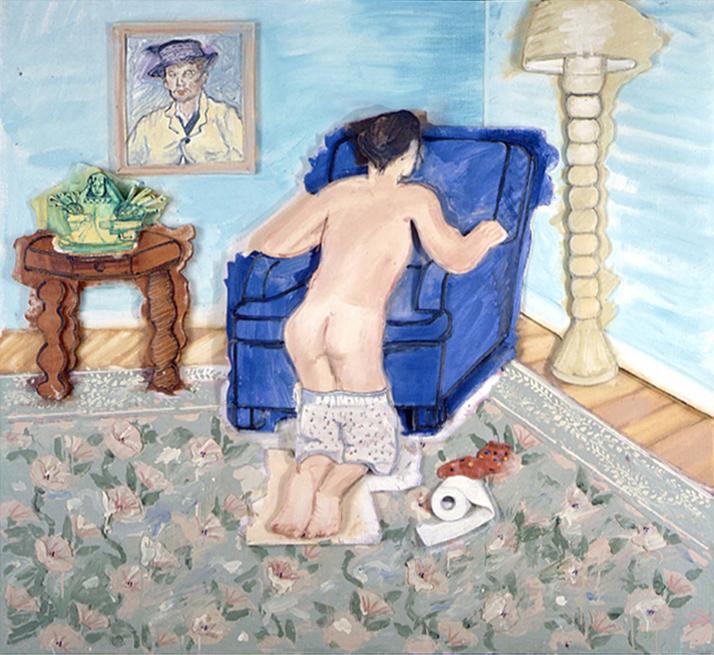
Memory, 1989. Oil on canvas mounted on sculpted foamboard (Construct), 76.75 x 81 x 7.5 in.
